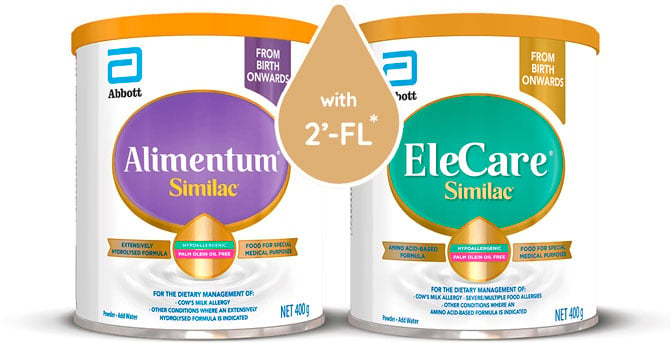Acts as food for bacteria, selecting only the good kinds6–9
For parents and carers of infants who have been prescribed or recommended a specialist formula by a healthcare professional.
Specialty Formulas
Information about our non-specialty formulas, including Similac® First Infant Milk and Similac® Follow On Milk.



